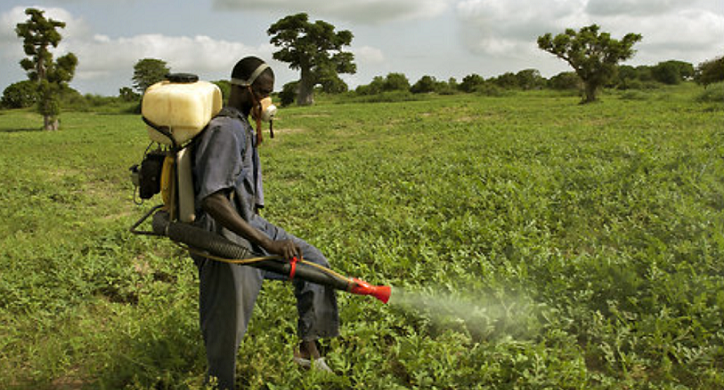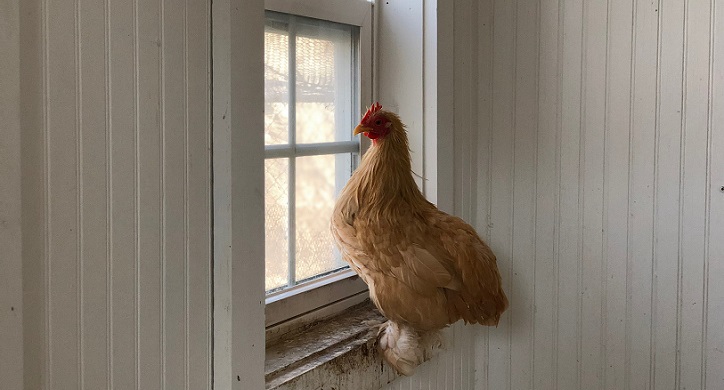The blunt warning contained within a recent research report from Tufts University’s Federal Nutrition Research Advisory Group on the rising health issues among Americans today is simple: we need change! The advisory group recommends a more coordinated approach among the diet and health-related agencies on Capitol Hill. The paper, “Strengthening national nutrition research: rationale and options for a new coordinated federal research effort and authority”, was published in July’s issue of The American Journal of Clinical Nutrition.
Finding ways to better coordinate and direct research could help us make improved lifestyle choices to combat heart disease and other diet-related threats to human health. It’s time to take the necessary steps to not just manage our health, but dramatically improve our government’s efforts to provide the information and advice we need to make the smart dietary decisions best for our entire family. And it all begins in Washington, D.C.
The Problem
Over 10 different federal agencies in the U.S. are researching health and nutrition while trying to identify ways to make Americans healthier by decreasing obesity, diabetes, and heart disease – ultimately lowering death rates. The problem is not a lack of research, but a lack of collaboration among all agencies.
Numerous U.S. federal agencies, such as the Centers for Disease Control, National Institute of Health (NIH), Food & Drug Administration, Agency for International Development, Veterans Affairs, NASA, Department of Agriculture (USDA), Department of Health & Human Services, Department of Defense, and the Agency for Healthcare Research & Quality, unanimously agree: we Americans need to improve our health…and quickly.
But what is being done?
There’s no governing unit at the federal level that oversees what research is being done and how to most efficiently come up with solutions for consumers to understand and put in place while grocery shopping. What’s mind-boggling is that these agencies have conducted similar studies without coordinating their efforts to just do one comprehensive study, showcasing an ineffectiveness in resources, time management, and tax dollars.
Because of these inefficiencies, Americans are more perplexed about their health and nutrition than ever. What should I be eating? And how much? Additionally, there are so many terms and trendy diets popping up, it is hard to know which are nutritionally sound. Low-fat vs. whole fat, paleo vs. keto, intermittent fasting, even coconut oil and celery juice – all of these diets create controversy about optimal health. Even though awareness is increasing about sugars and unhealthy fats, the switch to healthy foods such as vegetables and fruits has not been made.
COVID only amplified these existing issues. One researcher of the study, Dr. Dariush Mozaffarian, explained it as:
“COVID was a fast pandemic that made the slow pandemic of poor nutrition and diet-related illnesses come to life.”
COVID also accelerated many underlying nutritional problems that the “slow pandemic” was causing. This includes complications from major diet-related illnesses (obesity, hypertension, diabetes, etc.) when paired with COVID.

Results of the Study
The white paper outlines the four most important issues that prevent us from being healthy:
- How do diet-related health issues affect our economy, our health, our national security, and sustainability?
- How do cross-governmental organizations that compile research coordinate and share their information?
- What are the opportunities for nutrition-related discoveries in fundamental, clinical, public health, food and agricultural, and transnational scientific research?
- What are the best practices to strategically coordinate federal nutrition research going forward?
Through their study, researchers found that more Americans are sick than healthy due to diet-related illnesses. When our nation’s health is this poor, it causes many other problems, including:
- Issues with productivity
- Increase in health-care costs
- Health disparities among race and gender
- Government budget issues
- Economic competitiveness
- Lack of military readiness
Real change can only occur with coordination and with consolidated goals around nutrition research, budget planning, and federal investment. But it starts with us: there needs to be a greater say from the consumer as to what we need, and really what we should demand from our government.
The paper relayed that, over the last 50 years, federal healthcare spending has risen from 5% of the budget to a current level of 28%, with 85% of the spend going towards diet-related chronic diseases. In the same time frame, U.S. business spending on healthcare has increased from $79 billion to $1.2 TRILLION.
Imagine how effective those funds could be if they were redirected toward preventing diseases instead of treating them.
Researchers found that we need more funding toward health and nutrition research than there is today. The USDA and the NIH are the largest funders of federal nutrition research. However, there is still not enough funding to support the myriad ways of how and what we eat affecting our overall health.
Research in nutrition is critical…and complicated. An example provided by the paper is the molecular basis of nutritional needs based on your age and lifestyle. Or what foods are critical in the first 1,000 days of life to prevent diseases later in life. And investigating which foods help prevent food allergies.
Tufts’ Conclusions
Researchers pulled no punches in citing the federal government’s role in creating such a crisis. Finding that greater consensus is needed on matters of diet and obesity, with coordination as a key first step in what will admittedly be a very tough process.
Real change will only take place with greater coordination between agencies, and with management that aspires to dramatically improve American lives. This includes:
- One leadership at the federal level with a national director
- Advancement of federal investment and funding
- Continuing agency autonomy, but with a coordinated and harmonized system implemented from above and budget split between agencies
Executing these recommendations into a unified approach would make it far easier to do such things as identify national dietary goals, establish research needs and priorities, recommend optimal use of financial and resources, deliver a consistent message to consumers, implement educational programs into schools and universities, and so much more.
Getting the Message Across
As reasonable as the messages within the research may seem, the idea of greater coordination on this important public health issue nonetheless faces a long road to action by Washington.
Changing how Washington shares power and responsibility is a difficult task, even amid clear and present needs. That task grows even tougher when it faces enormous competition for time and energy from an administration and a Congress already overwhelmed by COVID and other pressing national issues. Politicians aren’t very likely to see this as a priority – unless we tell them otherwise.
How do we create that political pressure? What does it take to make the messages within the Tufts paper more than an academic exercise? And what can we do to bring about the changes needed to begin a process of coordination and cooperation that will lead to structural improvements?
We may not spark a revolution on making a coordinated approach to diet and health a national priority…but together we can begin an evolution.
It begins with the consumer. Calls and letters to elected officials are one traditional avenue of action. But in today’s digital age, social media has become a powerful tool for building coalitions of concerned citizens – politicians call them voters – that drive action.
Share your questions about health and nutrition with others. Describe the challenges you face in finding the relevant, credible information you need to make smart decisions about what to feed your family. Point to examples of food products, package labels, and other examples of companies that do a good job of addressing your concerns and questions. Share all that and more on whatever social media you use – and make sure you add your elected national officials to your distribution lists.
If nothing else, share them with Dirt-to-Dinner, and we’ll collect and report on them on your behalf. This is about your health and your family’s well-being, not just a Washington Beltway tussle among faceless bureaucrats.
Do you have thoughts of your own on this matter? Email us at info@dirt-to-dinner.com.










 Alternatively, chronic inflammation, or inflammation that lasts for too long like heart disease, and obesity, can be harmful. Cortisol works the same way! When the levels of your stress hormone do not regulate, and don’t decrease after a stressful event has occurred, they remain too high. And if this happens for too long, it can be damaging and stressful on the body.
Alternatively, chronic inflammation, or inflammation that lasts for too long like heart disease, and obesity, can be harmful. Cortisol works the same way! When the levels of your stress hormone do not regulate, and don’t decrease after a stressful event has occurred, they remain too high. And if this happens for too long, it can be damaging and stressful on the body.





 As we look to the future of what life will look like after COVID-19, we can’t wait to get back to our favorite corner bistro to get our hands on that famous burger or specialty dessert that we have been missing for months.
As we look to the future of what life will look like after COVID-19, we can’t wait to get back to our favorite corner bistro to get our hands on that famous burger or specialty dessert that we have been missing for months. Helping to mobilize the community is a simple, effective way to show your support for restaurants outside of donations. If you are financially struggling, this is a costless way to lend a hand! Something you can do right now is to take a look at the handles we have included above in our Relief Funds section and consider following these organizations. That way, you can show your support by raising awareness and stay up-to-date with initiatives and efforts they are working on.
Helping to mobilize the community is a simple, effective way to show your support for restaurants outside of donations. If you are financially struggling, this is a costless way to lend a hand! Something you can do right now is to take a look at the handles we have included above in our Relief Funds section and consider following these organizations. That way, you can show your support by raising awareness and stay up-to-date with initiatives and efforts they are working on.
 China has increased their agricultural imports as they come out of COVID. For the first six months of
China has increased their agricultural imports as they come out of COVID. For the first six months of 










 Take me to the (chlorine) river.
Take me to the (chlorine) river. Leave the eucalyptus for the koalas.
Leave the eucalyptus for the koalas. Let’s think about this over a drink.
Let’s think about this over a drink. Social media is a powerful new communication tool. But we’ve already seen that it can sometimes go rogue and drive health experts crazy.
Social media is a powerful new communication tool. But we’ve already seen that it can sometimes go rogue and drive health experts crazy.  A punch a day keeps the COVID away.
A punch a day keeps the COVID away.

























 And it’s almost infinitely scalable.
And it’s almost infinitely scalable. The rings are made from the fibrous material that is left out in wheat fields after harvest, which is typically either composted in the field, burned, or sold as cattle feed. It’s a byproduct of the food and beverage industry, that E6PR is using to develop packaging for those products down the line.
The rings are made from the fibrous material that is left out in wheat fields after harvest, which is typically either composted in the field, burned, or sold as cattle feed. It’s a byproduct of the food and beverage industry, that E6PR is using to develop packaging for those products down the line.





























 Russell and Brandy work hard to make a go of it in the demanding world of cattle production. It’s hard work keeping tabs on the cattle 24/7, protecting them from predators, and doing it all in a way that preserves the delicate balance that protects the natural resources they and their predecessors have relied upon for more than a century. It’s a rugged life made even more so by dealing with desperate immigrants passing through.
Russell and Brandy work hard to make a go of it in the demanding world of cattle production. It’s hard work keeping tabs on the cattle 24/7, protecting them from predators, and doing it all in a way that preserves the delicate balance that protects the natural resources they and their predecessors have relied upon for more than a century. It’s a rugged life made even more so by dealing with desperate immigrants passing through.




























 By 1933, Joe’s plan for a one-stop shop was in motion, carrying staples like butter, pickles, and donuts, in addition to his renowned meat selection.
By 1933, Joe’s plan for a one-stop shop was in motion, carrying staples like butter, pickles, and donuts, in addition to his renowned meat selection.




 In the long run, Heinen’s believes that their consumers will appreciate transparency in all that they do, because being a boutique family business puts them in the unique position of connecting with not only their associates to address their needs, but their loyal customers, too.
In the long run, Heinen’s believes that their consumers will appreciate transparency in all that they do, because being a boutique family business puts them in the unique position of connecting with not only their associates to address their needs, but their loyal customers, too.









































 This was true for my stepmother’s father and uncle who were identical twins – obviously with the same DNA. Both Paul and Uncle Art have/had a gene that made them prone to heart disease. In 1998, they both had open-heart surgery. Afterwards, Paul has continued to take care of himself with diet and exercise. He also has a lot of love in his life with two adoring daughters, grandchildren, and a girlfriend (after his wife passed away). Art, on the other hand, was not quite as zealous about a healthy lifestyle. Uncle Art died in 2010. Meanwhile, Paul is steadily smiling, living, and dating his girlfriend at 101 years old!
This was true for my stepmother’s father and uncle who were identical twins – obviously with the same DNA. Both Paul and Uncle Art have/had a gene that made them prone to heart disease. In 1998, they both had open-heart surgery. Afterwards, Paul has continued to take care of himself with diet and exercise. He also has a lot of love in his life with two adoring daughters, grandchildren, and a girlfriend (after his wife passed away). Art, on the other hand, was not quite as zealous about a healthy lifestyle. Uncle Art died in 2010. Meanwhile, Paul is steadily smiling, living, and dating his girlfriend at 101 years old!










































 In Minnesota, canned vegetables were a winter staple. As a result, our parents had a large vegetable garden and our job was to plant, grow and harvest. A lot of our childhood was spent on a small family farm while our parents traveled. We would help feed the hogs, milk the cows, and ride horses. If we wanted chicken for dinner, we went to the barn, found a plump one, cut off its head, plucked it and got it ready for the oven.
In Minnesota, canned vegetables were a winter staple. As a result, our parents had a large vegetable garden and our job was to plant, grow and harvest. A lot of our childhood was spent on a small family farm while our parents traveled. We would help feed the hogs, milk the cows, and ride horses. If we wanted chicken for dinner, we went to the barn, found a plump one, cut off its head, plucked it and got it ready for the oven.
 Of particular interest to my family and me is diet related to brain health. My grandmother battled Alzheimer’s and dementia for years, but because she adhered to the
Of particular interest to my family and me is diet related to brain health. My grandmother battled Alzheimer’s and dementia for years, but because she adhered to the  It’s wonderful to see options of organic and conventional produce at our market, but what matters most to me is that I buy fresh foods that will provide my family with the most nutrients. My go-to is conventional produce, but if the organic raspberries look better, or the store only has Pink Lady apples grown organically, I’m happy to get those. But it’s amazing to have a choice – and to choose healthy. Because of these choices, my one-year-old daughter is happy and thriving. And I’m grateful to always be learning more about our food system.
It’s wonderful to see options of organic and conventional produce at our market, but what matters most to me is that I buy fresh foods that will provide my family with the most nutrients. My go-to is conventional produce, but if the organic raspberries look better, or the store only has Pink Lady apples grown organically, I’m happy to get those. But it’s amazing to have a choice – and to choose healthy. Because of these choices, my one-year-old daughter is happy and thriving. And I’m grateful to always be learning more about our food system. You’ve made food plentiful, available and
You’ve made food plentiful, available and 
 “Our extension services seek to answer real-life questions,” according to Dr. Gary Bates, director of the University’s Beef and Forage Center and associate professor of plant and soil science. It’s learning for the real world, not just a classroom or a course exam or even a dinner-table discussion.
“Our extension services seek to answer real-life questions,” according to Dr. Gary Bates, director of the University’s Beef and Forage Center and associate professor of plant and soil science. It’s learning for the real world, not just a classroom or a course exam or even a dinner-table discussion.
 “We’ve built our programs around the simple idea that if our state economy is going to be healthy, we have to have a healthy agricultural sector…we want everybody in the state to be able to benefit from that. Not just the men and women who produce agricultural products…we teach people how to get the most from that system, in how they choose the right foods, how they preserve food and avoid waste, how they prepare safe meals for their families, and on and on and on. We teach everyone how important it is to make the system truly sustainable.”
“We’ve built our programs around the simple idea that if our state economy is going to be healthy, we have to have a healthy agricultural sector…we want everybody in the state to be able to benefit from that. Not just the men and women who produce agricultural products…we teach people how to get the most from that system, in how they choose the right foods, how they preserve food and avoid waste, how they prepare safe meals for their families, and on and on and on. We teach everyone how important it is to make the system truly sustainable.”







































































